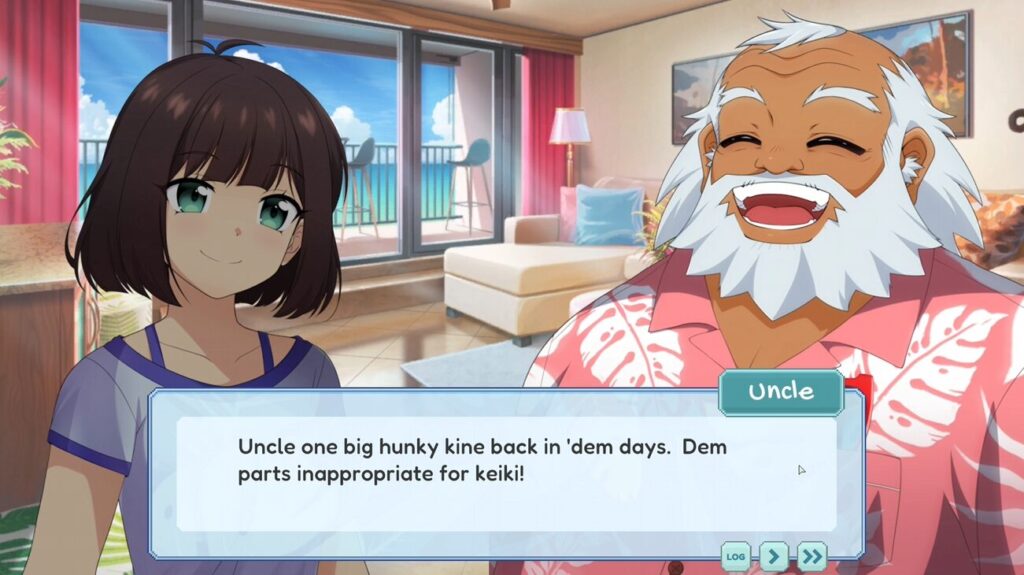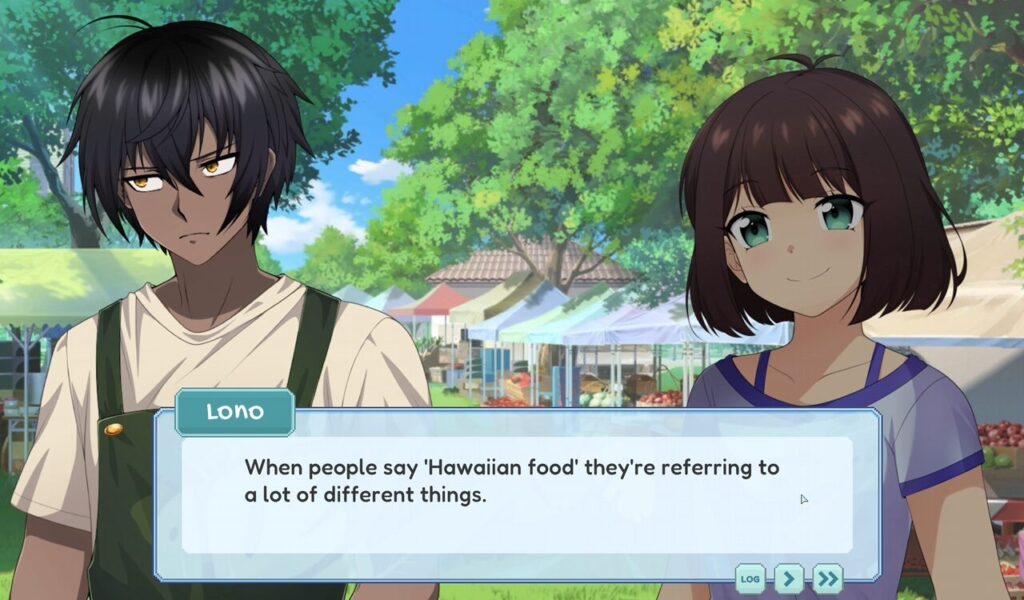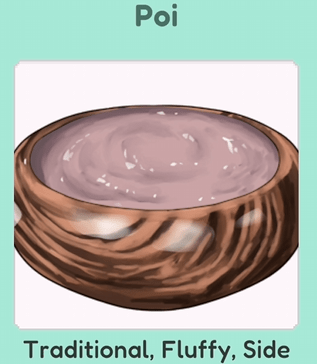I had never been so excited for a single-player cooking game until I stumbled upon this absolute gem. I can definitely say that my interest in this cozy game was very biased since I was raised in Hawai’i, but that also meant that I had very high expectations. I really wanted to know if this game was going to showcase Hawai’i in a stereotypical light or if it actually stayed true to Hawaiian culture. I was so happy to find that Kitchen Sync: Aloha! truly feels like it was developed by someone who either did their homework on popular dishes in Hawai’i as well as the culture or they’re a local themself.
A game that reminds me of home

Many beautiful scenes in this game such as the image above that reminds me of Waikiki easily transports me back to Hawai’i. Anyone who has lived in or visited Hawai’i would agree that you’ll often see tall palm trees lining the sidewalks, neighborhoods with gorgeous mountain backdrops, and many roosters just strutting about. Even the mini-games in Kitchen Sync: Aloha! make me think of home because so many people enjoy outdoor activities including fishing and hiking on trails that lead to rushing waterfalls like Manoa Falls.

Aside from the dishes that you’re able to cook in this game, what gives me the most nostalgia is when the characters speak Hawaiian pidgin (also known as Hawaiian Creole) or say words in the Hawaiian language. Hawaiian is of course the language of the Native Hawaiian people whereas Hawaiian pidgin was made up by several groups of people from different cultures who moved to Hawai’i in the 19th century to work on the plantations.
If you’ve never watched Lilo & Stitch, I highly suggest looking up videos of people speaking Hawaiian pidgin and Hawaiian; I bet they’re unlike anything you’ve ever heard before. Whenever I hear someone speak Hawaiian pidgin while I am out and about where I currently live (which is extremely rare), it immediately gives me such a bittersweet feeling since I can’t help but miss home.
Traditional Hawaiian vs Local Hawaiian food

The key indicator that proved to me that the developer of Kitchen Sync: Aloha! did their due diligence with this game was that they acknowledged that traditional Hawaiian food and local Hawaiian food are vastly different. Unfortunately, most people group both of those types of food together and give it a blanket term of “Hawaiian food.” When someone visits Hawai’i for the first time, they normally opt to try dishes such as spam musubi, loco moco, and shave ice, which are all incredibly delicious. However, dishes like that are actually a mixture of various different cultures of people who moved to Hawai’i throughout the years.



Unlike local Hawaiian food, traditional Hawaiian food includes dishes that were created by the Native Hawaiian people using ingredients that they were able to find on the islands as well as their own cooking methods. Since I only played the demo thus far for Kitchen Sync; Aloha!, I have unfortunately only made these traditional Hawaiian dishes using the modern cooking equipment in the game. However, I did see that learning the traditional cooking methods is available in the full game! So please stay tuned because I will make sure to include that information when I post a full game review.
Games that have sentimental value

It’s always important to me to ensure that the games I buy are enjoyable. Although, what makes a cozy game truly special to me is if it’s able to evoke a spectrum of feelings, transport me to a different place, or bring up beloved memories. Kitchen Sync: Aloha! makes me reminisce on my life while I lived in Hawai’i and all the trips I took to visit family and friends afterwards, which brings about such bittersweet feelings. I hope this game is able to make you think of your time in Hawai’i if you’ve lived there or taken a vacation there. Or if you’ve never been and hope to visit someday, I hope it renews that desire for you.
Leave a Reply